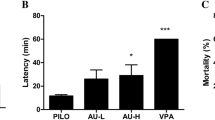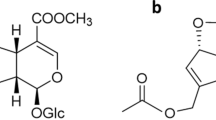Summary
Previous studies have suggested that glutathione-S-transferase π (GST-π) over-expression in the brain tissue is associated with refractory epilepsy. However, whether the change in GST-π level in the peripheral blood is in line with that in brain tissue remains unknown. This study examined the correlation between GST-π in brain tissue and that in peripheral blood in rat models of pilocarpine-induced refractory epilepsy. The animals were divided into drug-resistant group and drug-responsive group according to the response to anti-epileptic drugs. GST-π expression in brain tissue was immunohistochemically determined, while the expression of GST-π in peripheral blood was analyzed by Western blotting. In the hippocampus and cortex, GST-π was mainly found in the cytoplasm and membrane of neurons, and the GST-π expression level was higher in drug-resistant group than in the drug-responsive group and saline control group (P<0.05). Moreover, there was no significant difference between responders and saline control animals (P>0.05). The change in expression of GST-π in peripheral blood showed the same pattern as that in brain tissues, suggesting GST-π might contribute to drug resistance in epilepsy. Importantly, the GST-π over-expression in peripheral blood could be used as a marker for resistance to anti-epileptic agents.
Similar content being viewed by others
References
Brodie MJ, Kwan P. Staged approach to epilepsy management. Neurology, 2002,58(8 Supp15):S2–S8
Tsuchida S, Sekine Y, Shineha R, et al. Elevation of the placental glutathione s-transferase form (GST-π) in tumor tissues and the levels in sera of patients with cancer. Cancer Res, 1989,49(18), 5225–5229
Gong YL, Wang XF, Gong Y, et al. The expression of glutathione-S-transferase in the brains of patients with drug-refractory epilepsy. Chin J Neurosurg (Chinese), 2006,22(8):510–512
Racine RJ. Modification of seizure activity by electrical stimulation. II. Motor seizure. Electroencephalogr Clin Neurophysiol, 1972,32( 3):281–294
Volk HA, Löscher W. Multidrug resistance in epilepsy: rats with drug-resistant seizures exhibit enhanced brain expression of P-glycoprotein compared with rats with drug-responsive seizures. Brain, 2005,128(Pt 6): 1358–1368
Volk HA, Arabadzisz D, Fritschy JM, et al. Antiepileptic drug-resistant rats differ from drug-responsive rats in hippocampal neurodegeneration and GABAa receptor ligand binding in a model of temporal lobe epilepsy. Neurobiol Dis, 2006,21(3):633–646
Leite JP, Cavalheiro EA. Effects of conventional antiepileptic drugs in a 612 model of spontaneous recurrent seizures in rats. Epilepsy Res, 1995,20(2):93–104
Shang W, Liu WH.. Expressions of glutathione S-transfer ase alpha, mu, and pi in brains of medically intractable epileptic patients. BMC Neuroscience, 2008, 86(47):2202
Peng YQ, Wang JZ, Wang XF. Effects of topiramate on activities of glutathione s-transferase and expression of multidrug resistance gene in astrocytes in vitro. Chin J New Drugs Clin Remed (Chinese), 2004,23:279–282
Townsend DM, Tew KD. The role of glutathione-S-transeferase in anti-cancer drug resistence. Oncogene, 2003,22(47):7369–7375
Bu HZ, Kang P, Deese AJ, et al. Human in vitro glutathionyl and protein adducts of carbamazepine-10,11-exposide, a stable and pharmacologically active metabolite of carbazamepine. Drug Metab Dispos,2005,33: 1920–1924
Author information
Authors and Affiliations
Corresponding author
Rights and permissions
About this article
Cite this article
Deng, X., Jia, H., Yang, Z. et al. Correlation study on expression of GST-π protein in brain tissue and peripheral blood of epilepsy rats induced by pilocarpine. J. Huazhong Univ. Sci. Technol. [Med. Sci.] 31, 701–704 (2011). https://doi.org/10.1007/s11596-011-0586-x
Received:
Published:
Issue Date:
DOI: https://doi.org/10.1007/s11596-011-0586-x




